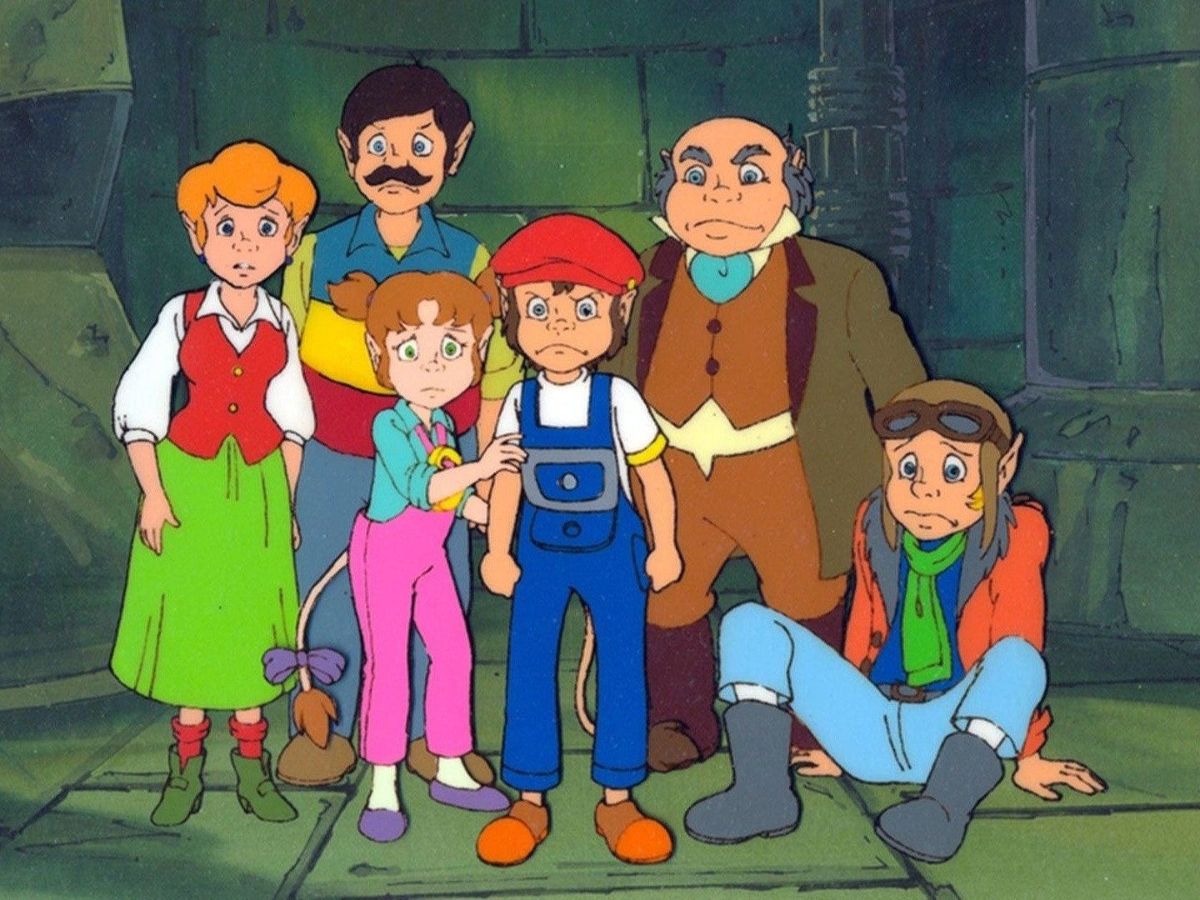
Cartoons from the 1980s hold a special place in the hearts of those who grew up during this vibrant era, offering a unique blend of nostalgia, creativity, and groundbreaking animation techniques. 1980s cartoons were more than just entertainment; they introduced audiences to dynamic characters, intricate storylines, and moral lessons that resonated with viewers of all ages. From the action-packed adventures of "He-Man" to the comedic escapades of "The Smurfs," these animated series left an indelible mark on pop culture. In this blog post, we'll uncover 18 fascinating facts about 1980s cartoons, revealing the magic behind the scenes and the lasting impact these shows have had on animation and storytelling. Whether you're a lifelong fan or a curious newcomer, prepare to be transported back to a time when cartoons were a colorful, captivating part of Saturday mornings.
The Golden Era of Animation: 1980s Cartoons
The 1980s were a magical time for cartoons, marking a period of innovation and creativity that left a lasting impact on audiences around the world. This decade introduced characters and stories that have become cultural icons, influencing not just animation but all forms of media that followed. Let's dive into some fascinating facts about 1980s cartoons that highlight their significance and enduring appeal.
-
Transformers debuted in 1984, introducing the world to the battle between Autobots and Decepticons. This series was more than just entertainment; it revolutionized the toy industry by creating a successful model of integrating toys with animated series.
-
He-Man and the Masters of the Universe was one of the first cartoons of the decade to directly market to children, launching in 1983. It set a precedent for future shows by combining exciting narratives with product merchandising.
-
The iconic phrase "Cowabunga" was popularized by Teenage Mutant Ninja Turtles, which first aired in 1987. This catchphrase, along with the series, became a defining part of 1980s pop culture.
Innovations in Animation Techniques
The 1980s weren't just about the stories being told; they were also about how those stories were brought to life. Advances in animation technology and techniques during this decade allowed creators to bring their visions to the screen in ways that were previously impossible.
-
ThunderCats, premiering in 1985, was known for its high production values, including detailed animation and a full musical score, which were uncommon for TV cartoons at the time.
-
Voltron: Defender of the Universe (1984) combined Japanese anime with American storytelling techniques, introducing many Western viewers to the anime style. This fusion created a unique visual and narrative style that captivated audiences.
Cultural Impact and Legacy
The influence of 1980s cartoons extends far beyond their original broadcast years. They have left a lasting legacy on both the entertainment industry and the generations who grew up watching them.
-
Many 1980s cartoons, like G.I. Joe and The Smurfs, were not just TV shows but launched vast merchandising empires, including toys, clothing, and even breakfast cereals, embedding these characters into the fabric of 80s culture.
-
Robotech, airing in 1985, is credited with introducing the concept of serialized storytelling to Western animation, paving the way for more complex and interconnected narratives in cartoons.
-
The Care Bears, first introduced in 1985, were among the pioneers in promoting positive messages about friendship, caring, and emotional intelligence, themes that have become more prevalent in children's programming.
Memorable Theme Songs and Soundtracks
One of the most unforgettable aspects of 1980s cartoons is their music. Theme songs and soundtracks played a crucial role in making these shows memorable.
-
The theme song for DuckTales, which debuted in 1987, is widely regarded as one of the catchiest and most beloved theme songs in animation history.
-
Jem and the Holograms (1985) not only featured music as a central theme but also released original songs that could stand alone as pop hits, blurring the lines between cartoon and music video.
Crossover Appeal and Revivals
The appeal of 1980s cartoons isn't limited to those who grew up with them. These shows have seen a resurgence in popularity, leading to new adaptations and revivals.
-
Transformers has seen numerous reboots and a successful film franchise, proving the enduring appeal of its characters and premise.
-
The Teenage Mutant Ninja Turtles have been reinvented multiple times for new generations, with movies, new TV series, and even a Broadway musical, showcasing their versatile appeal.
Pioneering Female Characters
The 1980s also saw a shift towards more inclusive character representation, with several shows featuring strong female characters.
-
She-Ra: Princess of Power (1985), a spin-off of He-Man, was groundbreaking for its focus on a female hero, offering young girls their own powerful role model.
-
Rainbow Brite (1984) and The Care Bears featured female characters in leading roles, challenging gender norms and promoting diversity in children's programming.
International Influence
The 1980s were a pivotal time for the exchange of cultural and creative ideas between the East and West, particularly in animation.
-
Astro Boy, though originally created in the 1950s, saw renewed popularity in the 1980s and is considered one of the first anime to make a significant impact on Western audiences.
-
Voltron and Robotech were among the first to introduce American audiences to the concept of mecha, giant robots that are now a staple in sci-fi and anime.
Educational Content
Amidst the action and adventure, the 1980s also offered cartoons with educational content, blending learning with fun.
-
The Littles (1983) and David the Gnome (1985) combined entertainment with lessons on ethics, social behavior, and respect for the environment.
-
Reading Rainbow, though not a cartoon, utilized animated segments to promote reading and literacy, demonstrating the decade's commitment to educational programming.
A Look Back at Animated Wonders
Diving into the vibrant world of 1980s cartoons has been nothing short of a nostalgic roller coaster. These animated classics weren't just shows; they were a cultural phenomenon that shaped an entire generation. From the action-packed adventures of He-Man to the moral lessons in The Smurfs, each series brought something unique to the table. They taught us about courage, friendship, and the power of imagination. Beyond entertainment, these cartoons hold a mirror to the era's societal values and technological advancements, reflecting a time when animation began to take bold new steps. As we reminisce about these iconic series, it's clear they've left an indelible mark on fans and the industry alike. Their legacy continues to inspire creators and captivate new audiences, proving that the magic of 1980s cartoons will forever hold a special place in our hearts.
Was this page helpful?
Our commitment to delivering trustworthy and engaging content is at the heart of what we do. Each fact on our site is contributed by real users like you, bringing a wealth of diverse insights and information. To ensure the highest standards of accuracy and reliability, our dedicated editors meticulously review each submission. This process guarantees that the facts we share are not only fascinating but also credible. Trust in our commitment to quality and authenticity as you explore and learn with us.


